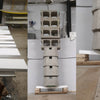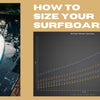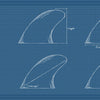Understanding the Different Types of Surfboards
Understanding the Different Types of Surfboards
On this journey of learning to surf, improving your skills or just making the most fun of all sessions, having the right type of surfboard will determine your style, the energy you’ll spend, and the number of waves you’ll catch in your sessions.
Introduction to Different Types of Surfboards
Each surfboard type is designed to accommodate different surfing styles, wave conditions, and the surfer's skill level. The most common types of surfboards include shortboards, longboards, fish surfboards, midlength, and hybrid surfboards. Each of these types has unique features and performance benefits that match different wave types and styles.
The Different Types of Surfboards
Shortboards
Shortboards are the most popular type of surfboard among experienced surfers. They are narrow, lightweight, and designed for high-speed performance and maneuverability. Shortboards are best suited for experienced surfers who want to take on challenging waves and perform advanced maneuvers like aerials, cutbacks, and barrels.
Shortboards are for any surfers that can manage to make their place in a lineup, read the ocean, and take waves on the steeper part. Those surfboards require good fitness to paddle around and catch the waves.
Longboards
Longboards are classic surfboards they allow for a stylish type of surfing and their high surface and volume make them paddle fast and catch waves easily while also being stable. Longboards are more than 8 feet long, they are wide, and they have a rounder outline.
Longboards are perfect for catching small waves, cruising, and performing basic maneuvers like trimming and bottom turns.
Advanced surfers will cross-step and nose-ride those boards with style and creativity.
Fish Boards
Fish surfboards are named after their tail shape that looks like a fish. They tend to be in the 5 to 6 feet long range.
There is an infinite quantity of variation in design, but for this blog, we will class them in 2 categories Retro and Modern.
Retro Fish are based on Steve Lis design that was designed in the late 60’s. They are short, wide, thick, have a low and continuous rocker. Retro fish are fun and work well in smaller wave conditions. They could work well for beginners and are also fun for advanced surfers. They have lots of paddle power and are also maneuverable.
Modern Fish are similar in design but will tend to be a little longer have more rocker and performance rails. Those designs can be the best all-around board to have in a quiver because they could impressively hold in steep waves, float over flat sections and allow for radical maneuver.
Mid Length
Mid Lengths are generally around 6 to 8 feet they glide enough to take off on small waves and their refined slicker profile can be duck dived and surfed in bigger waves. They make longer lines than a shortboard but can drive impressive power turns and fit into barrels perfectly. Their length makes them good paddlers and will help make your place in a lineup easily and take off early on waves of any size.
Hybrid Surfboards
By definition, hybrid surfboards are a combination of different surfboard types. They are usually a blend of high-performance surfboards with features of fish surfboards or grovelers. They will generally have an outline similar to a high-performance surfboard with a more relaxed rocker. They are offering a balance of performance with features that will make them easier to paddle into waves and surf in a wide range of waves type and sizes. They are versatile, easy to use, and can handle different wave conditions and styles. Hybrid boards are a great choice for surfers who want one board for all conditions.
Choosing the right surfboard can make all the difference in your surfing experience. To find your perfect match, consider your surfing style, skill level, fitness level, and the wave conditions you will be surfing in. It's also essential to choose a board that fits your body type and weight.
I like to think about the maneuvers I want to try and perfect and choose my surfboard according to this. With that in mind, you could really talk to a shaper and with the knowledge of your wave, your skills, and your fitness you could improve your surfing so much by surfing the right surfboard. Every surfboard type will make different lines and offer a different approach to surfing so in the end there is some trial and error to be made to find what you really like.
In the next blog, we’ll talk about how to size your surfboard perfectly.





